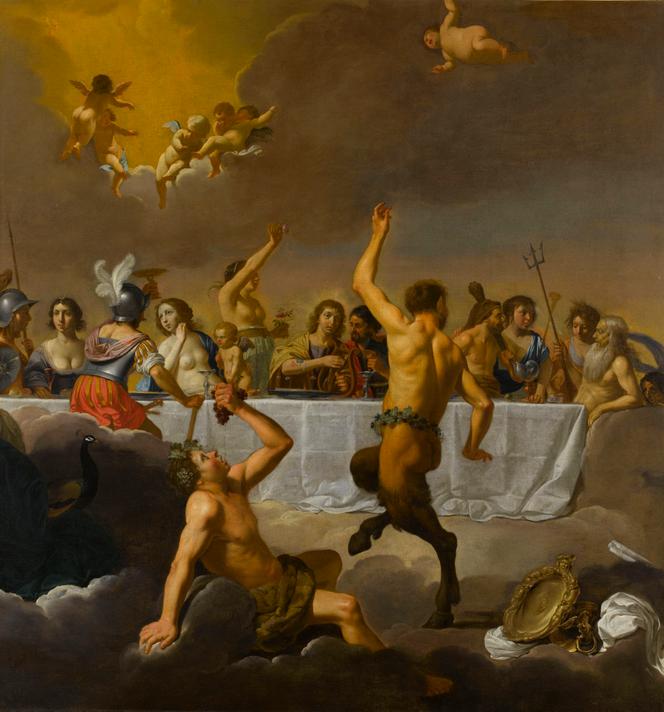
A scene from the opening ceremony of the Paris 2024 Olympic Games on Friday 26 July has since sparked a scandal: the one in which the singer Philippe Katerine appears almost completely naked, with his body painted blue. He was accused of immodesty and obscenity in the name of several religions, and the French Episcopal Conference deplored “scenes of mockery and ridicule of Christianity”. They thought it was a parody of the Last Supper, Christ’s last meal before his crucifixion, famously depicted in the mural by Leonardo da Vinci (1495-1498), but of which there are countless painted, drawn or engraved versions.
According to Christian tradition, this dinner – dinner In Latin, the name of the scene that brings together Christ and the twelve apostles is enough to affirm that the scene conceived by Thomas Jolly has nothing to do with the Last Supper, given the much larger number of guests. The confusion could well have arisen from the staging of the ceremony: the figures are grouped behind what looks like a table, although they lack the food and drink traditionally found in images of the Last Supper.
But above all, Katerine’s costume, if it can be called that, leaves no doubt about the mythological and artistic references at play. Her much-discussed nakedness, her beard, her crown of grapefruit and flowers, the braid that falls from her shoulders to her belly, the tray laden with fruit and flowers: everything points to her being the incarnation of the god called Dionysus by the Greeks, who became Bacchus for the Romans. The god’s guardian is Silenus, most often depicted with goat horns and in a state of intoxication. Dionysus is associated with the vine and wine and, more broadly, with nature and fertility. In Greece, he is also the father of tragedy, but that is not what the ceremony’s artistic director, Thomas Jolly, had in mind.
The group of drag queens, their extravagant costumes and the body language of both them and Katerine clearly allude to this iconography, which is found in the best-known depictions of Bacchus, including that by Caravaggio, and which reunite the young god with the beautiful Ariadne, whom he discovers on the island of Naxos, where she has been abandoned by her lover, Theseus. The most famous of these paintings is that by Titian (1520–1523), in the centre of which a naked Bacchus leaps out of a red cloak, escorted by bacchantes and satyrs, barely more clothed than he is, to whom the song sung by Katerine explicitly refers.
More generally, these elements are those of the classical iconography of the feast of the gods, an Olympic gathering of goddesses and gods of Olympus. Indeed, this was the reference in the mind of the director of the ceremony, interviewed on BFM-TV on Sunday 28 July: “The idea was rather to make a great pagan festival linked to the gods of Olympus… Olympus… Olympism.”
You have 11.86% of this article left to read. The rest is for subscribers only.



